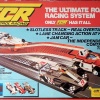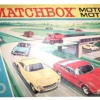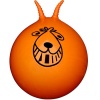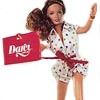Have you ever spent days watching cars go round, and round the same 3 metre racing track? If you have, you probably used to own a Scalextrix set.
A set consisted of miniature cars that ran on a track that slotted together, and ran on electricity. You could race anything up to 5 individual cars on parallel tracks. Fun?
Well, we in the evolved and forward thinking 2010’s might think that this was a banal or boring past-time. Cars going round and round? Where’s the excitement in that? But in fact Scalectrix was the 1970’s and 1980’s version of the Wii - and it needed the skill level of a Jedi ninja to keep the cars on the track for anything longer than twenty seconds. Scalectrix really was as difficult to master, as it was to spell.
A thing to remember was that this was a time when electricity had hardly entered the toy market, toys were mostly inanimate action men, or dolls, or plastic versions of the adult world. So to have something that actually moved (!) of it’s own volition (!) was not only fun, it was the future! It was amazing! Something that you could move and control with a trigger or button! Amazing! Not only that, but the cars often crashed at speed! Amazing! This recipe was cat nip to the 1980’s (mostly male) child.
The cars often had working lights, working doors, were 1:32 scale models of classic or modern racing cars. Thus giving them a real life feel, making you feel like a giant, controlling a miniature Nigel Mansel for your sport.
The design of the sets meant that the inside track was always shorter – and fights over that track were often and bloody, but it was a poisoned chalice; the distance was shorter but the bends more severe, so it was much easier for your car to fly off.
Indeed, the skill level needed to race Scalectrix cannot be overstated. If you accelerated too hard, or drove too fast, your car would fly off the track. If you drove erratically – your car flew off. At random intervals whatever you did – your car flew off. That trigger finger sensitivity to keep the joystick at the right pressure was learnt through arduous hours of practice.
The track did take some time to set up, so to decide to play Scalectrix was a commitment, and thus it could sit in its box unused for weeks at a time. In lofts to this day must be thousands of sets, gathering dust, but losing none of their lustre.
Scalextric was actually first conceived in 1952 by a small company called 'Minimodels Ltd' which made a range of model racing cars which ran on a clockwork motor – that’s right people – clockwork. They were called “Scalex”.. By the 1960’s the models were modified to take small electric motors and the 'Scalextric' brand ('SCALEX'-Electric) was born.
By 1982, Hornby had bought the company and create Hornby Hobbies Ltd (later Hornby Plc) – which made the sets. Now-a-days, Scalextric' is still going and went digital (!) in 2004, introducing Scalextric SportWorld which allows racers the ability to hook their Scalextric sets up to the internet to create a global community through on-line racing. So it’s still going strong.
To children today – raised on blockbusting 3D graphic Playstation adventures where you can save an entire alien race from extinction and learn kung fu before breakfast, it might seem like a game for the simple minded, or criminally insane, but to those of us that were there, that spent hours at the altar of Scalextrix, who’s fine motor skills were developed on the hair-trigger of the Scalextrix set, they know the magic, and that’s maybe all they need to know.










Do You Remember Scalextric?
Do You Remember Scalextric?